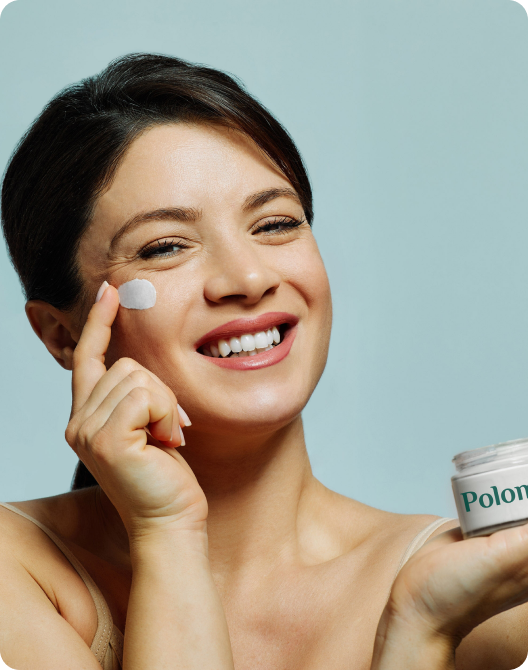Learn how Topical Tofacitinib can help manage eczema, psoriasis, and more
- Available as cream, ointment and gel
- 2 month supply
acf domain was triggered too early. This is usually an indicator for some code in the plugin or theme running too early. Translations should be loaded at the init action or later. Please see Debugging in WordPress for more information. (This message was added in version 6.7.0.) in /home/nwayzygjxmfd/public_html/www.staging.polomarsp.com/wp-includes/functions.php on line 6121Targeted treatment for sensitive skin areas
Targeted treatment for sensitive skin areas
Targeted treatment for sensitive skin areas

Topical Tofacitinib is a groundbreaking dermatological medication developed to help manage uncomfortable inflammatory skin disorders from the outside in. As a topical Janus Kinase (JAK) inhibitor, it works directly on the skin’s cellular mechanisms to reduce sources of irritation and flare-ups.
Specifically designed for the treatment of atopic dermatitis and psoriasis, Topical Tofacitinib blocks enzymes involved in the skin’s inflammatory response. By preventing overactive signals that lead to redness, scaling and itching, it calms sensitive skin from the place it matters most – on the surface.read more
While its mechanism is derived from oral JAK inhibitor Xeljanz, as a topical formulation Topical Tofacitinib provides relief without potential stomach issues tied to oral drugs. With localized application only to affected areas, it minimizes concerns over systemic side effects compared to treatment through ingestion.
Discover a smart, skin-loving solution for dermatitis or psoriasis relief. Topical Tofacitinib harnesses the power of targeted JAK inhibition on skin’s terms, not yours.
Tofacitinib, initially developed as an oral medication for conditions like rheumatoid arthritis, has a noteworthy history in pharmacology. First introduced and approved by the FDA in 2012 for rheumatoid arthritis treatment under the brand name Xeljanz, it was developed by Pfizer.
Its effectiveness as an anti-inflammatory agent soon sparked interest in the dermatological field. Researchers began to explore its potential for treating skin conditions, leading to the innovation of its topical form.read more
This new formulation aimed to offer targeted treatment for skin ailments like atopic dermatitis and psoriasis, directly applying the medication to affected areas. This development represented a significant shift, focusing on localized treatment to minimize systemic absorption and potential side effects associated with oral JAK inhibitors.
The journey of Tofacitinib from an oral to a topical medication highlights the evolving landscape of drug development, particularly in addressing specific needs within dermatology.

When using Topical Tofacitinib, it’s important to follow proper guidelines to ensure effectiveness and safety. Remember, this is general guidance, and it’s crucial to follow the specific instructions given by your healthcare provider or pharmacist, as they may vary based on individual circumstances and the condition being treated

Keep in mind, the instructions provided here are of a general nature. It’s imperative to adhere to the particular directions offered by your healthcare provider or pharmacist, as they might differ according to your personal health situation and the specific skin condition you are managing.












Please note these FAQs are not a substitute for professional medical advice, diagnosis, or treatment. You should always consult your healthcare provider for personalized information

Topical Tofacitinib is used to treat certain skin conditions, such as atopic dermatitis and psoriasis. It works by inhibiting the activity of specific enzymes involved in the inflammatory process of these conditions

You should apply a thin layer of Topical Tofacitinib to the affected area of the skin as prescribed by your healthcare provider. Clean and dry the area before application, and wash your hands before and after use.

The frequency of application depends on the directions given by your healthcare provider. It’s essential to follow their instructions and not to use it more often than recommended.

You should inform your healthcare provider if you are pregnant, planning to become pregnant, or breastfeeding before using Topical Tofacitinib. They will advise you if it is safe to use.

If you miss a dose, apply it as soon as you remember. However, if it’s almost time for your next dose, skip the missed dose and continue with your regular schedule. Do not apply extra medication to make up for the missed dose.

As with any medication, Topical Tofacitinib may cause side effects. Common side effects can include mild skin irritation at the application site. Inform your healthcare provider if you experience any severe or persistent side effects.

Unless advised by your healthcare provider, you should not cover the treated area with bandages or dressings as this may increase the absorption of the medication.

Store Topical Tofacitinib at room temperature away from moisture and heat. Keep the container tightly closed when not in use.

Avoid using other skin products on the treated area unless your doctor tells you to. Also, avoid exposure to sunlight or tanning beds, as Tofacitinib can make you sunburn more easily.

Inform your healthcare provider about all other medications you are using to avoid potential interactions. This includes prescriptions, over-the-counter drugs, and herbal products.